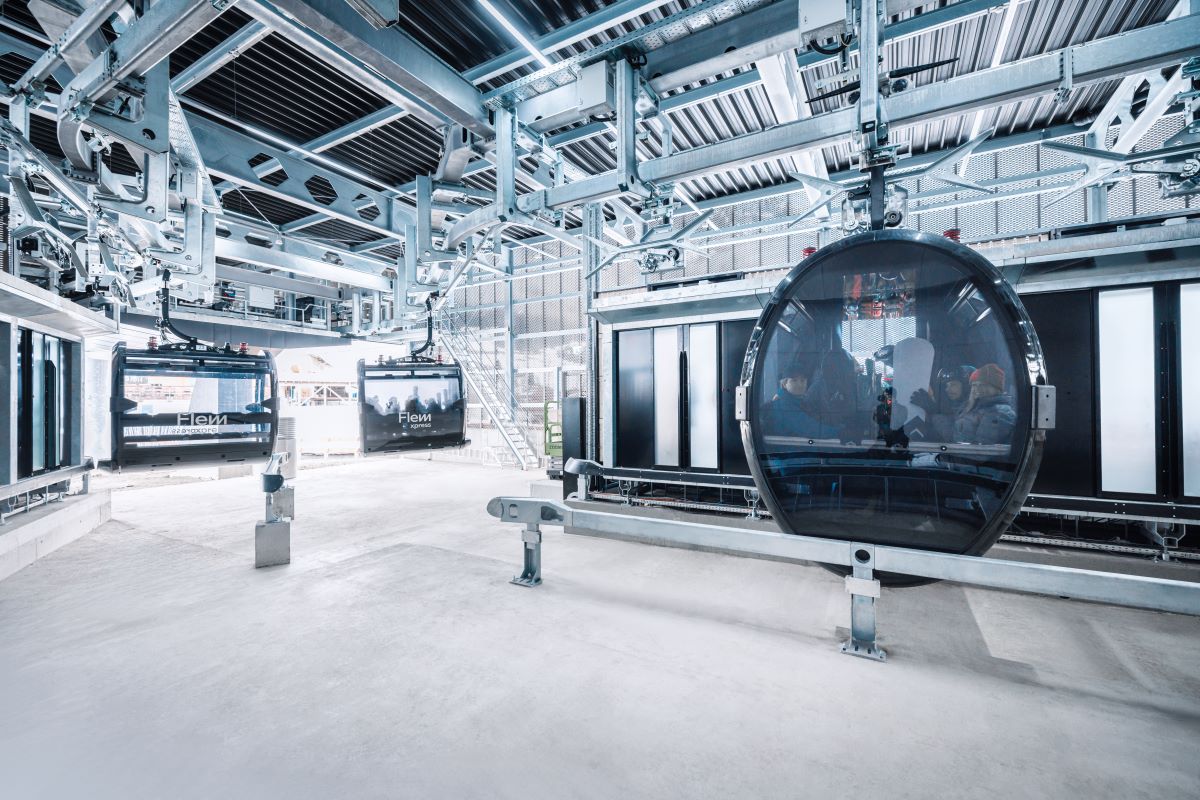
Cities, SI Urban 1/2024
Ropetaxi is now reality
Over 50,000 passengers can now confirm – BARTHOLET‘s Ropetaxi is a reality. Since mid-December 2023, the Flims Laax Falera ski resort has been operating the “FlemXpress“ – demonstrating that the innovative cable car system is also ready for cities.
Cable car on demand
Because the technology has numerous characteristics that can play to its strengths, especially in urban areas. Technically, the Ropetaxi is a special mode of operation of a detachable single-rope circulating cable car. With it, BARTHOLET enables operation “on demand“ as well as the navigation of branched route networks.
The basic principle: Before boarding, the passenger selects the desired destination by pressing a button on the destination pillar. The
requested cabin then transports the guest directly to the destination without changing cabins. A major advantage in the daily commute of many urban residents. Thus, the Ropetaxi unfolds its traffic engineering effectiveness in inter- and multimodal transport.
Clamp
The Ropetaxi operates autonomously with eMotion drives in the clamping area.
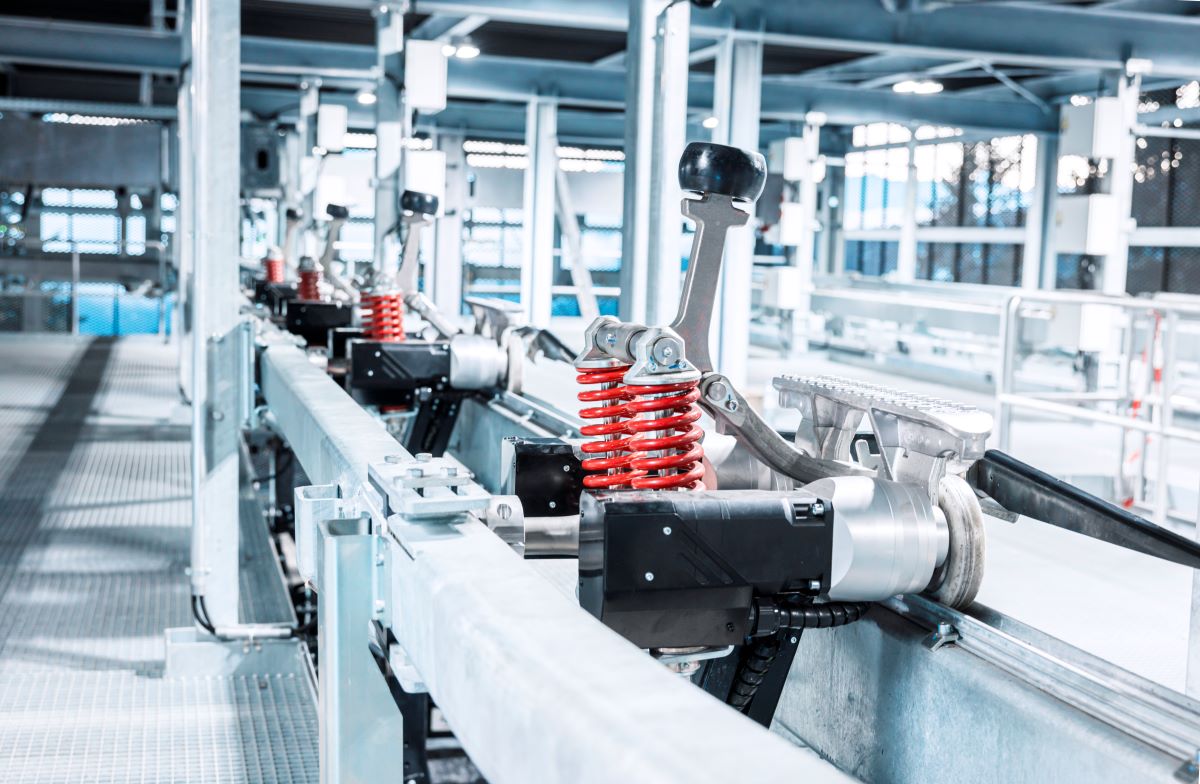
Technical Details
The Swiss manufacturer achieves this through autonomously driving cabins in the stations. The gondolas are powered by separate, batterypowered
eMotion motors in the clamping area. Combinations of routes can be formed using switches.
Outside the stations, the cabins hang on the rope as usual. In the case of Flims, the Ropetaxi can transport up to 1,500 people per
hour. However, the possibilities of this operating system can be greatly expanded or new applications found. For example, both 8-seater and 10-seater cabins can be equipped with the new drive technology.
Flick of a switch
Passengers select their destination at destination pillars.
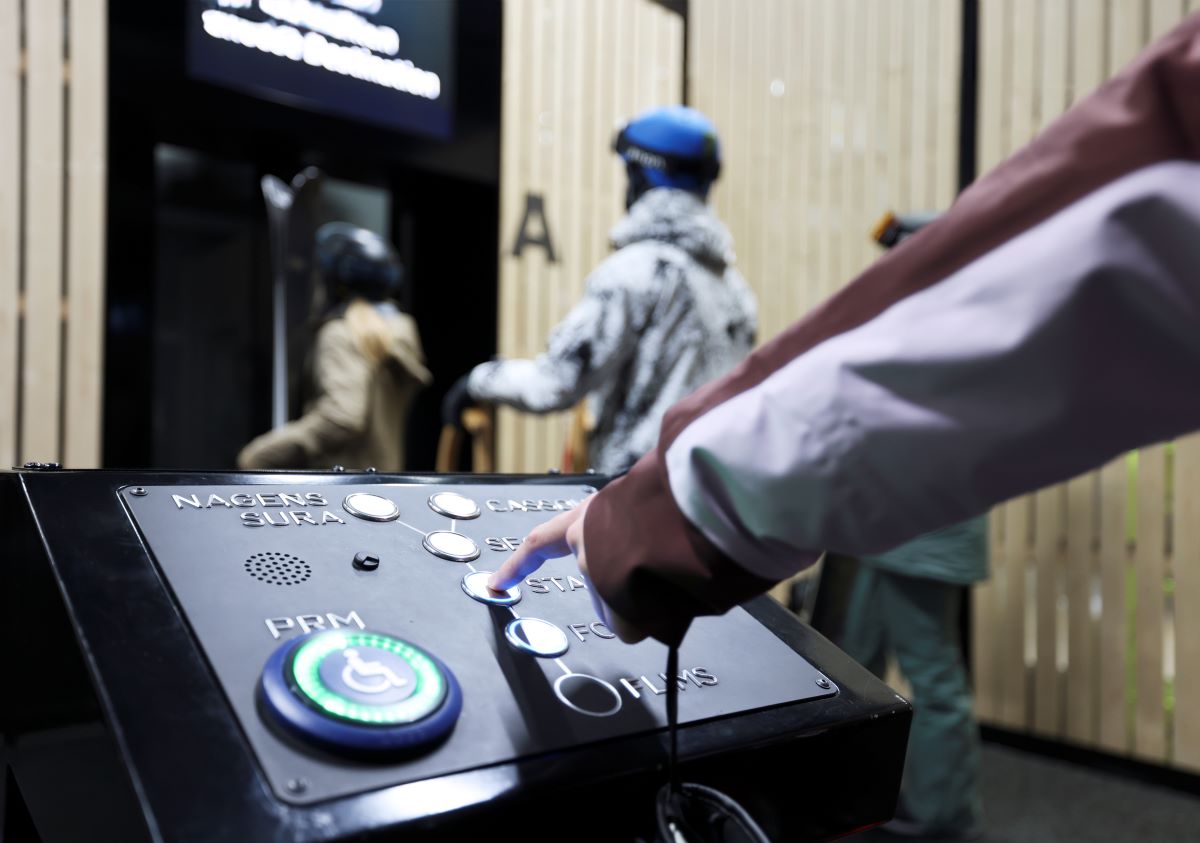
Passengers are guided
The integrated and intelligent allocation of passengers with display regulates boarding into the stationary gondola within the stations. The platforms are spatially separated from the station passage. The cabins come to a complete stop when boarding and alighting, allowing passengers to
board and alight without any problems.
This provides a high level of accessibility and almost unlimited potential for comfort in the access area. This is not only practical for
passengers with strollers, sports equipment, and luggage, but also enables older and mobility-impaired individuals to access stress-free.
For the first time, a circulating cable car becomes truly accessible to the visually and mobility impaired. This is
important for the social acceptance of the cable car as an urban mode of transport and the inclusion of all population groups.
Everything in view
Ropetaxi is monitored by a central control center.
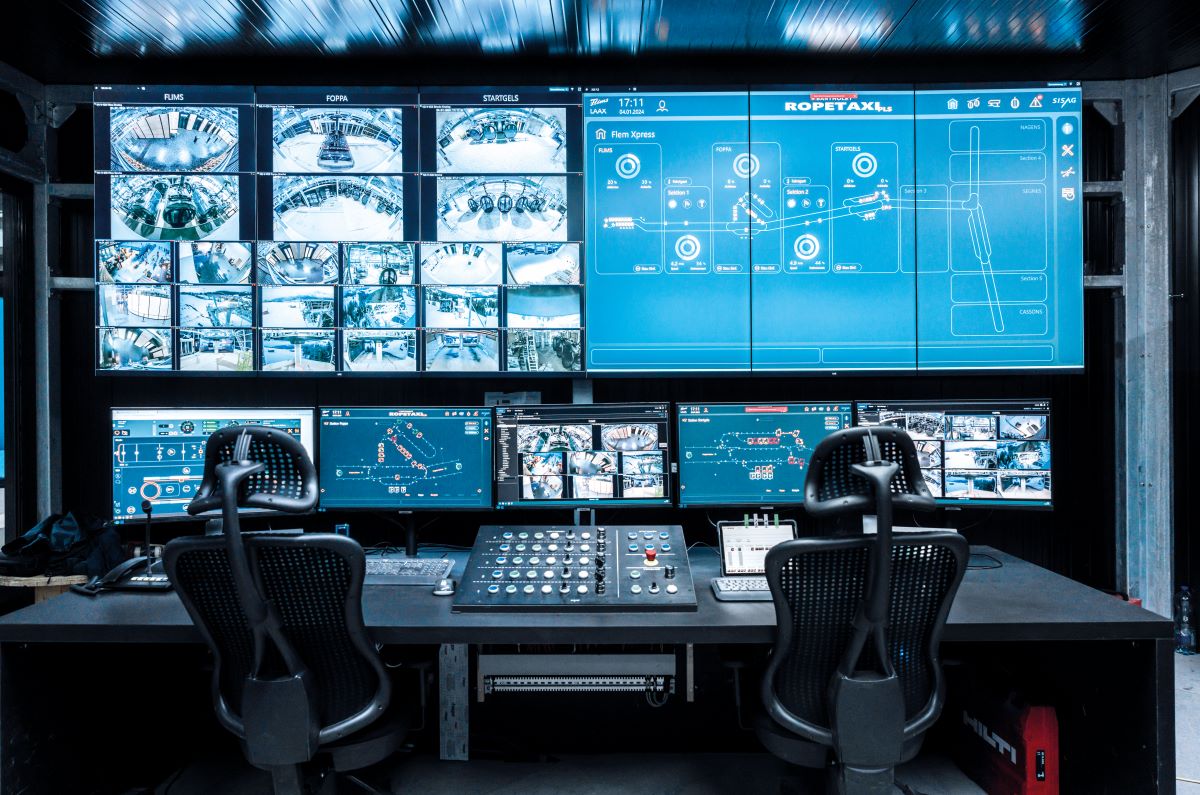
Ropetaxi also makes
the cable car more efficient
A cable car is already one of the most environmentally friendly means of transport in the world due to its long service life and lower CO2 emissions. Since the cabins are only in motion when guests use the system, unnecessary, energy-consuming empty trips can be avoided.
So far, the Ropetaxi in Flims has achieved a 20 percent higher occupancy rate compared to conventional systems. Noise emissions are also lower.
Costs are reduced
Reduced empty trips also reduce the operating and maintenance costs of the cable car. The Ropetaxi also operates autonomously without personnel and is monitored by a central control center. In addition, the station design can be flexibly adapted to the existing possibilities. Both are important advantages in cities where space is limited and skilled workers are often scarce.
Thanks to the garage concept, the vehicles are ready for use at any time and can be easily adapted to different user groups. This flexibility is also particularly important in urban use. In general, if the gondolas are not needed, they are not on the track.
Guiding passengers:
The guests are guided to their cabin by overhead displays.
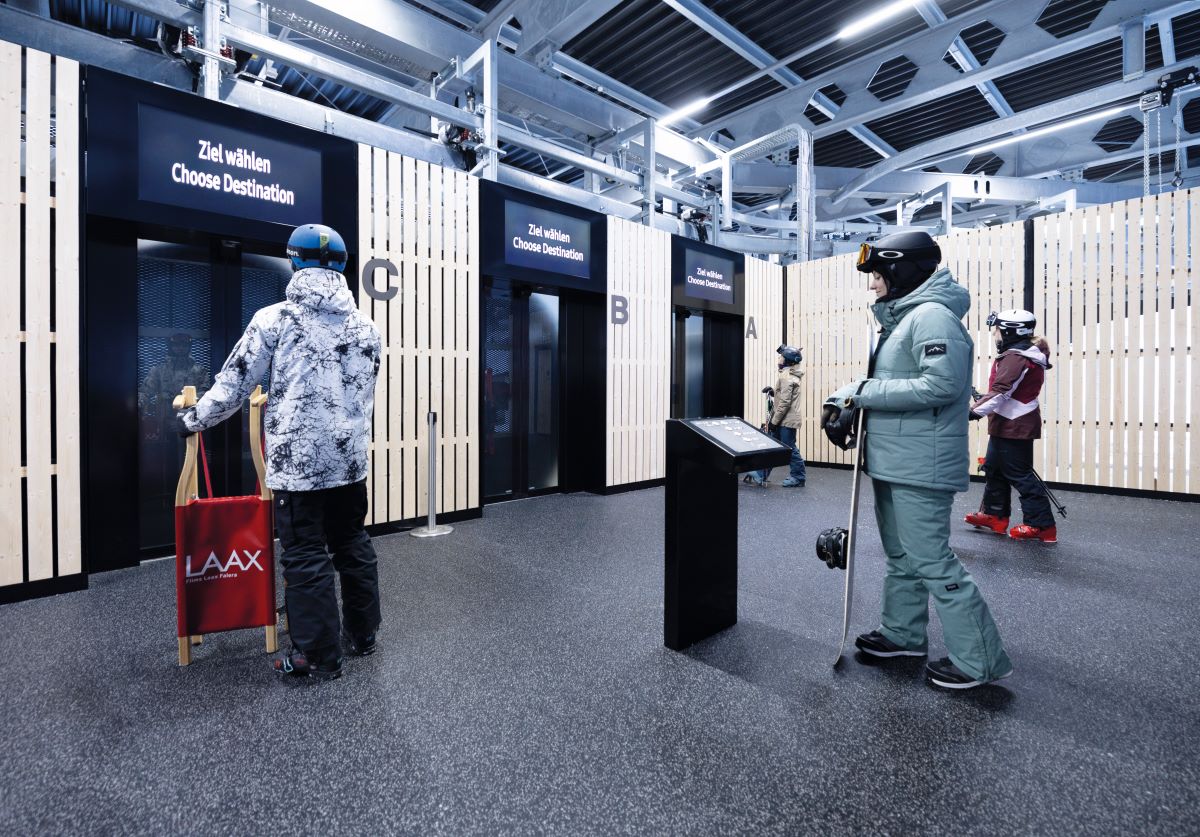
Conclusion
Overall, the Ropetaxi is a promising alternative in passenger transport that is efficient, user-oriented, and already successfully in use. With the innovative operating system, BARTHOLET is setting new standards. Cable cars on demand are no longer a dream, but a reality. Perhaps soon in cities.







